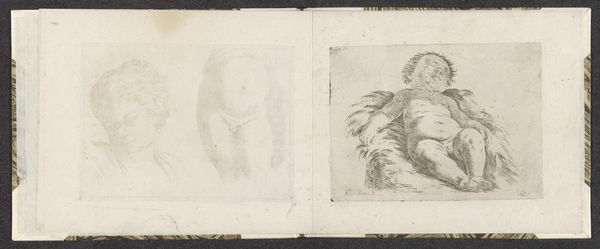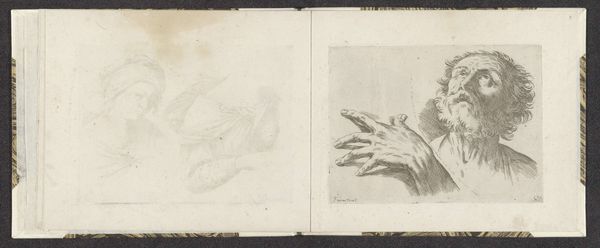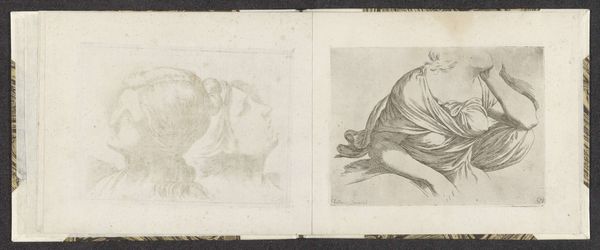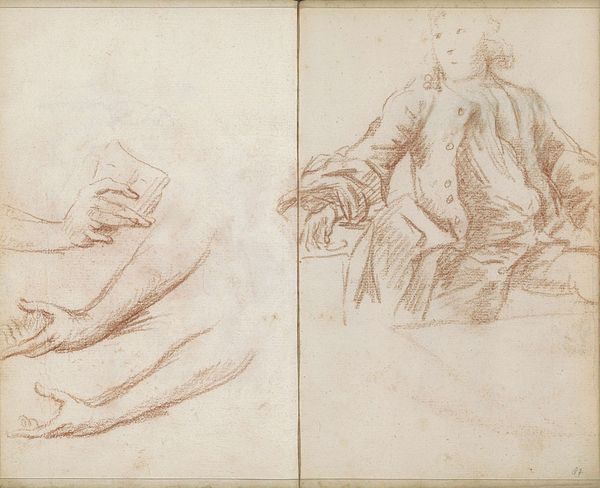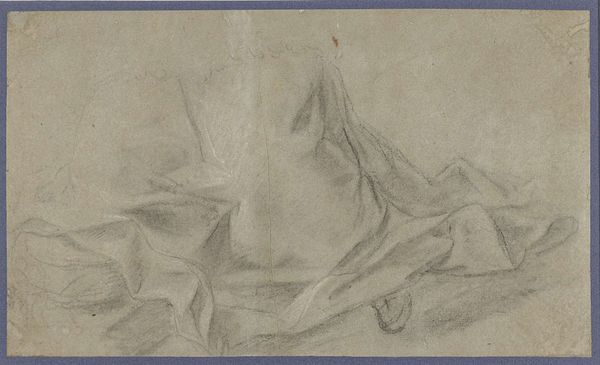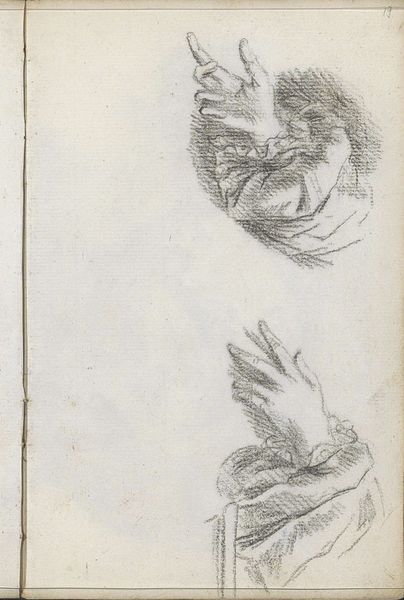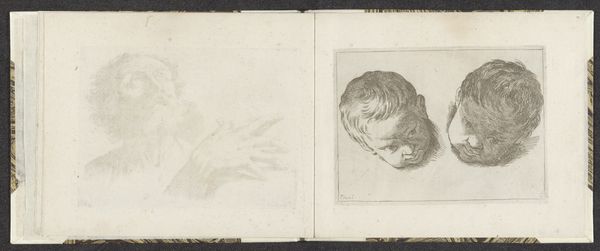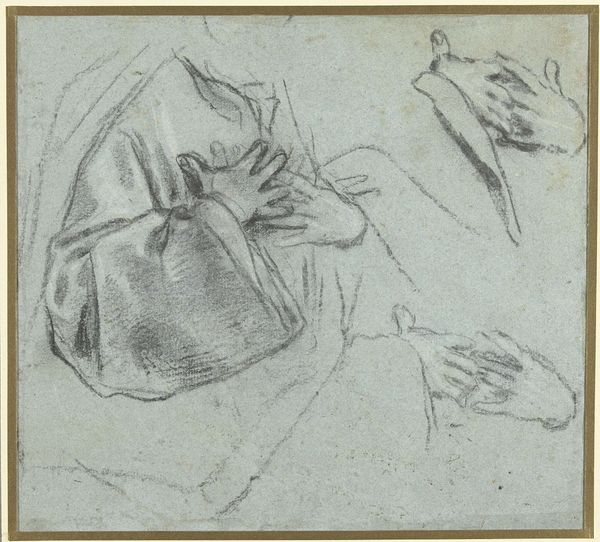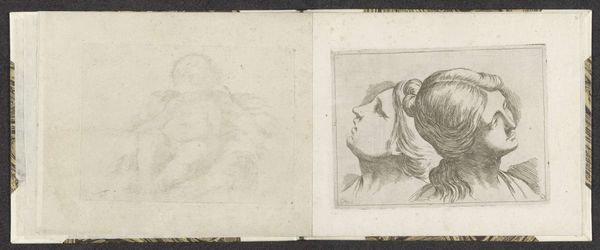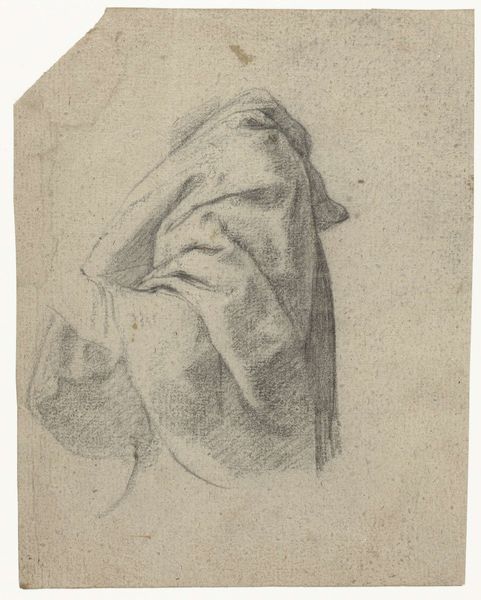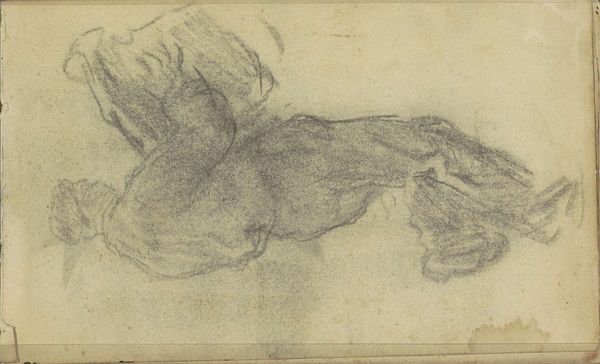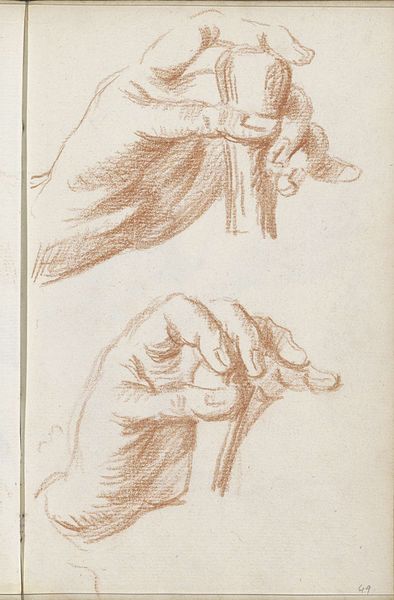
Hand met een houten stok en hoofd van een jongen c. 1663 - 1666
0:00
0:00
giuseppemariamitelli
Rijksmuseum
drawing, pencil
#
portrait
#
drawing
#
toned paper
#
light pencil work
#
quirky sketch
#
baroque
#
sketch book
#
incomplete sketchy
#
figuration
#
personal sketchbook
#
ink drawing experimentation
#
pen-ink sketch
#
pencil
#
sketchbook drawing
#
sketchbook art
#
profile
Dimensions: height 143 mm, width 193 mm
Copyright: Rijks Museum: Open Domain
Editor: So, this is “Hand met een houten stok en hoofd van een jongen,” from around 1663-1666, by Giuseppe Maria Mitelli. It’s a pencil drawing. It looks like a page from a sketchbook. The juxtaposition of the hand with a stick and the child's head creates a peculiar sense of contemplation for me. What strikes you about it? Curator: This drawing, especially viewed as a sketch, gives us insight into the artistic process and the role of art within 17th-century society. Consider its original context: sketches were crucial for developing larger compositions. They show the artist grappling with form and expression. Do you think these studies might have been in preparation for a larger piece with social or political commentary? Editor: That’s interesting. I hadn't thought of it that way. Perhaps it was a study for a larger religious scene where the boy represented innocence, and the stick alluded to something else entirely? I was drawn in mostly by the human element. Curator: Exactly! The Baroque era saw an emphasis on capturing human emotion and experience, often to convey powerful messages to viewers within a specific socio-political setting. The fact this is in the Rijksmuseum speaks to how preliminary sketches became collected artworks over time and how perceptions of their function can shift. Does seeing this as something other than "just" a sketch change how you appreciate it? Editor: Absolutely. Understanding the broader context gives it greater weight. I was so focused on the sketch-like nature and intimacy, and the composition but completely neglected its role in history. It does change my point of view. Curator: I agree. Looking at sketches helps to ground the works of the past in very real actions of artistic creation, influenced and reflecting their own moment in time. They carry both artistic and historic significance.
Comments
No comments
Be the first to comment and join the conversation on the ultimate creative platform.
